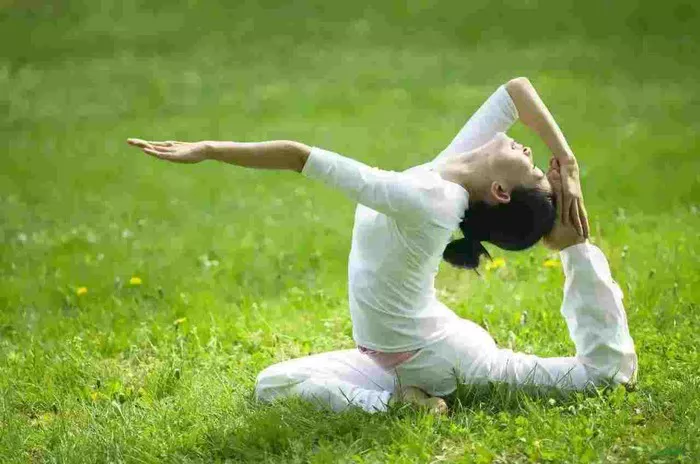The profound wisdom of Patanjali, encapsulated in his yoga sutras, serves as the philosophical bedrock for numerous yoga traditions, with Ashtanga yoga being a prime exemplar. Ashtanga yoga, with its structured sequences and emphasis on breath – movement synchronization, is deeply intertwined with Patanjali’s principles, offering practitioners a holistic path to physical, mental, and spiritual well – being.
The Ethical Blueprint: Yamas and Niyamas as the Moral Compass of Ashtanga
At the very core of Ashtanga yoga practice lies the ethical framework of Yamas and Niyamas from Patanjali’s teachings. Ahimsa, the principle of non – violence, extends beyond the physical realm. In Ashtanga, it translates into a gentle and respectful approach to one’s body. Practitioners refrain from pushing their bodies into postures with force, understanding that each body has its unique limits. This non – violent attitude also permeates interactions within the Ashtanga community, fostering an environment of mutual respect and kindness.
Satya, or truthfulness, is evident in the honesty practitioners exhibit towards their own practice. They acknowledge their current capabilities without exaggeration or self – deprecation. When facing a challenging pose, they approach it with an authentic assessment of their strength and flexibility, rather than succumbing to the pressure of achieving a certain level quickly.
Asteya (non – stealing) in Ashtanga is about respecting the individual journey of each practitioner. No one compares their progress to others, recognizing that the path of yoga is a personal one. Brahmacharya, often interpreted as moderation, is reflected in the disciplined and balanced approach to the practice. Practitioners don’t overexert or burnout but instead maintain a sustainable rhythm in their Ashtanga routine. Aparigraha, the principle of non – grasping, means not being overly attached to the outcomes of the practice. Whether it’s achieving a difficult posture or attaining a certain level of spiritual growth, Ashtanga practitioners remain detached, focusing on the process rather than the result.
Asana: A Physical Embodiment of Patanjali’s Vision of Steadiness and Comfort
Patanjali defined Asana as a posture that is stable and comfortable. In Ashtanga yoga, this definition comes to life through its precisely structured postures. The Primary Series, for example, begins with gentle forward folds and standing poses that gradually open up the body, preparing it for more complex postures. Each pose is designed to engage multiple muscle groups simultaneously, creating a sense of stability.
In poses like Virabhadrasana II (Warrior II Pose), the alignment of the legs, the extension of the arms, and the engagement of the core all work together to maintain steadiness. The balance required in standing poses such as Ardha Chandrasana (Half Moon Pose) further emphasizes the importance of stability. At the same time, Ashtanga encourages practitioners to find comfort within the postures. Through proper alignment and the use of props when necessary, discomfort is minimized, allowing the body to relax and benefit from the stretch and strengthening. This harmonious blend of stability and comfort in Ashtanga postures is a direct manifestation of Patanjali’s concept of Asana.
Pranayama: Harnessing the Power of Breath in Ashtanga
Pranayama, the control of breath, holds a central place in both Patanjali’s yoga and Ashtanga practice. In Ashtanga, Ujjayi breathing is the cornerstone of the practice. This deep, audible breath is synchronized with every movement, whether it’s flowing through a vinyasa or holding a static posture. Ujjayi breathing not only supplies oxygen to the muscles, enhancing their performance, but also has a calming effect on the nervous system.
As the practitioner inhales deeply during an upward movement and exhales fully during a downward movement, they are regulating the flow of prana, the life force energy. This controlled breathing helps in reducing stress and anxiety, preparing the mind for deeper states of concentration. The rhythmic nature of Ujjayi breathing in Ashtanga also acts as a metronome, guiding the pace of the practice and ensuring a seamless flow from one posture to the next. In this way, Ashtanga’s emphasis on Pranayama is a vivid expression of Patanjali’s teachings on the significance of breath control in yoga.
Pratyahara: The Inner Journey of Sensory Withdrawal in Ashtanga
Pratyahara, the withdrawal of the senses from external distractions, is a subtle yet powerful aspect of Ashtanga yoga. The repetitive nature of the Ashtanga sequences, along with the focus on breath and movement, creates a meditative environment. As practitioners move through the postures, they are encouraged to turn their attention inward, away from the chaos of the outside world.
In a crowded yoga studio, for instance, the Ashtanga practitioner is able to block out the noise and visual distractions, focusing solely on the sensations within their body, the sound of their breath, and the alignment of their postures. This withdrawal of the senses allows for a deeper connection with the self. By detaching from external stimuli, practitioners can observe their thoughts and emotions without judgment, paving the way for self – awareness and inner transformation, in line with Patanjali’s principle of Pratyahara.
Dharana: Cultivating Laser – Sharp Concentration in Ashtanga
Dharana, the practice of concentration, is crucial in Ashtanga yoga. The fixed sequence of postures demands unwavering focus from start to finish. Whether it’s the precision required in an arm balance like Bakasana (Crow Pose) or the stability needed in an inversion such as Sirsasana (Headstand), concentration is the key.
Ashtanga practitioners train their minds to stay focused on a single point, be it the tip of the nose during Ujjayi breathing, a specific part of the body that needs adjustment, or the alignment of a complex posture. This single – pointed focus helps in developing mental clarity and discipline. By repeatedly bringing the wandering mind back to the object of concentration during the practice, Ashtanga practitioners gradually strengthen their ability to focus, which is an essential aspect of Patanjali’s yoga philosophy.
Dhyana: The Culmination of Practice in Ashtanga’s Meditative State
Dhyana, or meditation, is the ultimate goal of Patanjali’s yoga, and Ashtanga serves as a powerful vehicle to reach this state. With consistent practice of Asana, Pranayama, Pratyahara, and Dharana, Ashtanga practitioners gradually enter a state of Dhyana. The continuous flow of postures, combined with the controlled breath and the inward focus, creates a moving meditation.
In this state, the mind is free from distractions and fully immersed in the present moment. The boundaries between the practitioner, the practice, and the object of concentration dissolve, leading to a profound sense of peace and self – realization. Ashtanga’s unique combination of physical movement and mental focus makes it an effective path to Dhyana, allowing practitioners to experience the union with the divine as envisioned by Patanjali.
Conclusion
From the ethical foundation provided by Yamas and Niyamas to the physical postures of Asana, the breath control of Pranayama, and the mental disciplines of Pratyahara, Dharana, and Dhyana, Ashtanga yoga serves as a living embodiment of Patanjali’s timeless wisdom. By understanding and applying these principles, Ashtanga practitioners embark on a transformative journey that enriches their physical health, sharpens their mental faculties, and nourishes their spiritual essence, bringing them closer to the ultimate goal of yoga – the state of Samadhi.




















